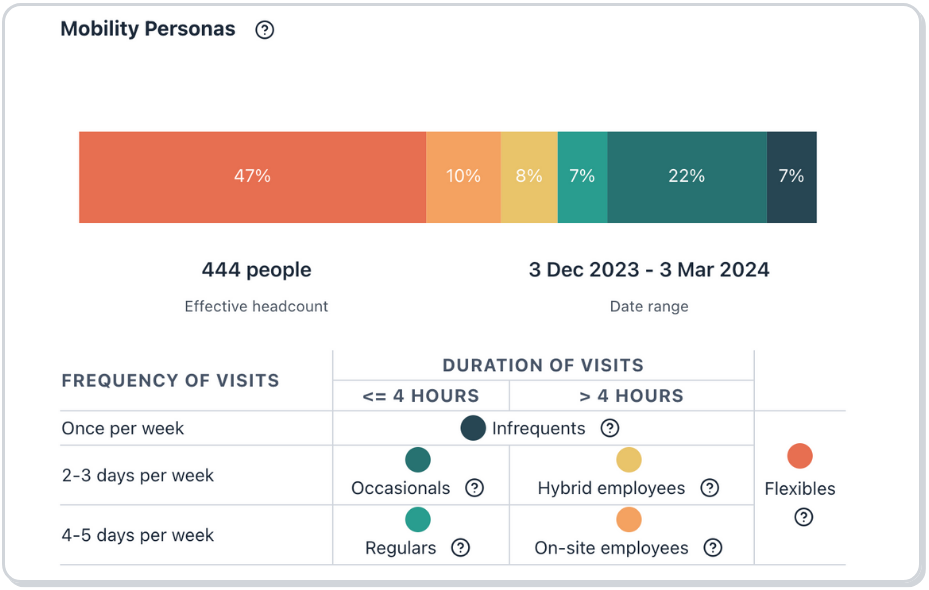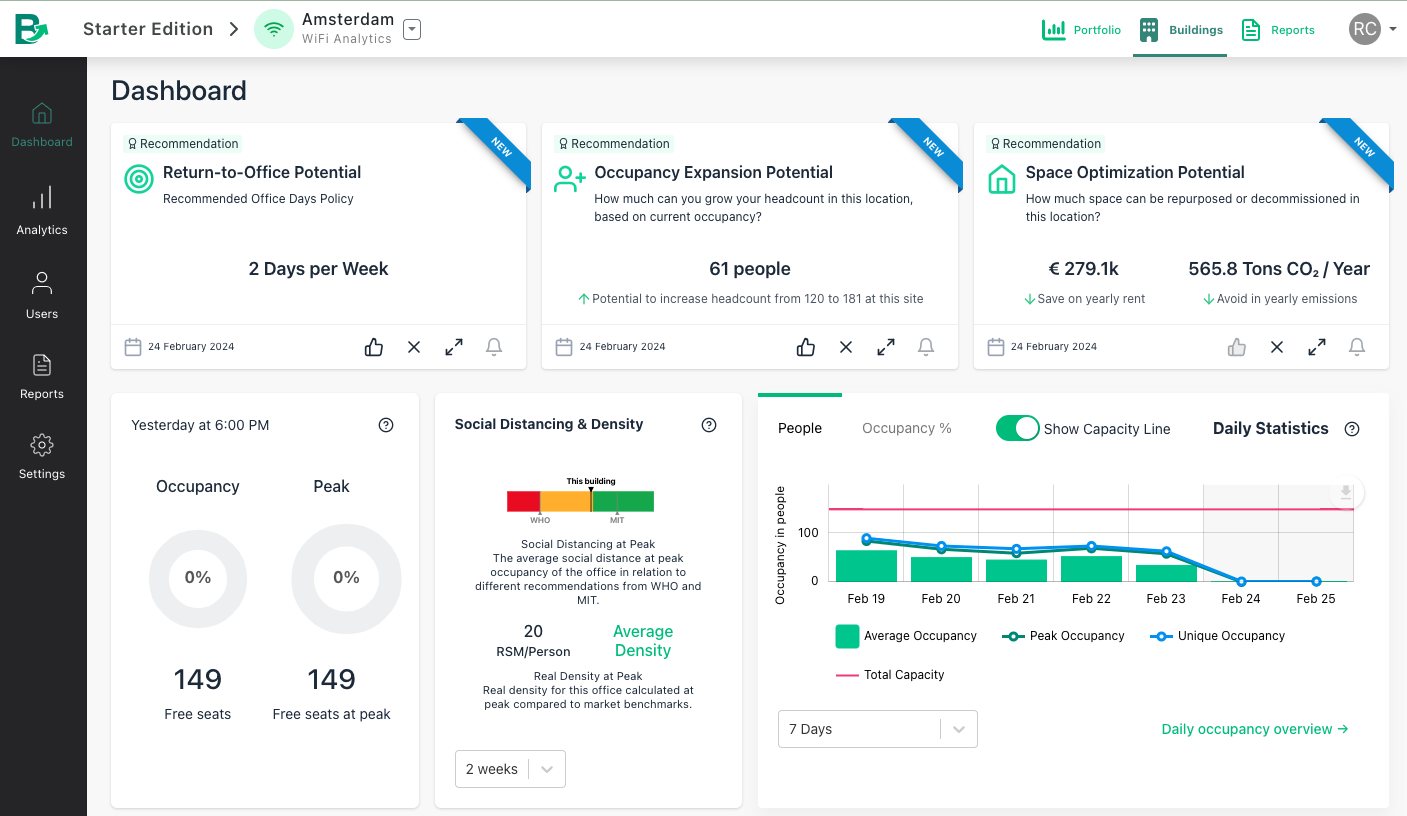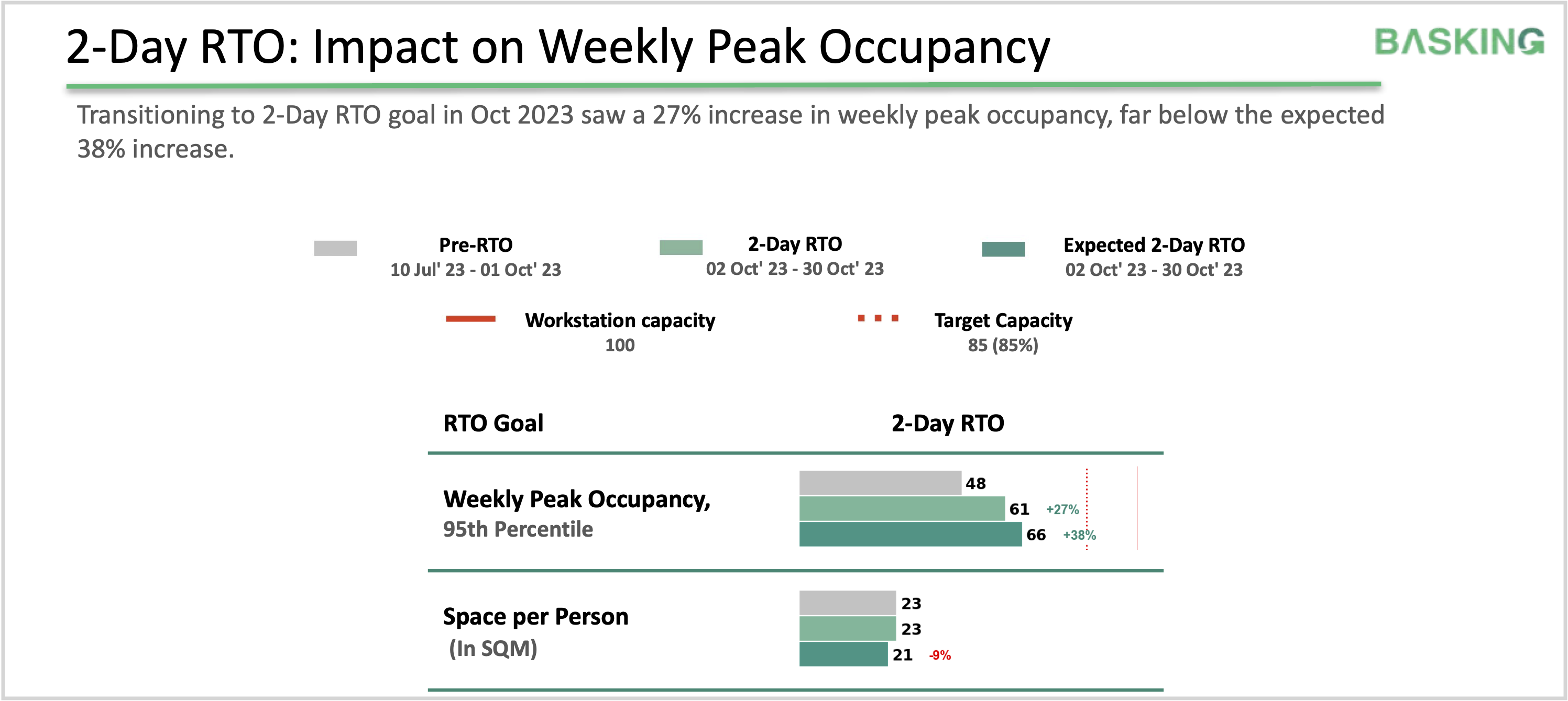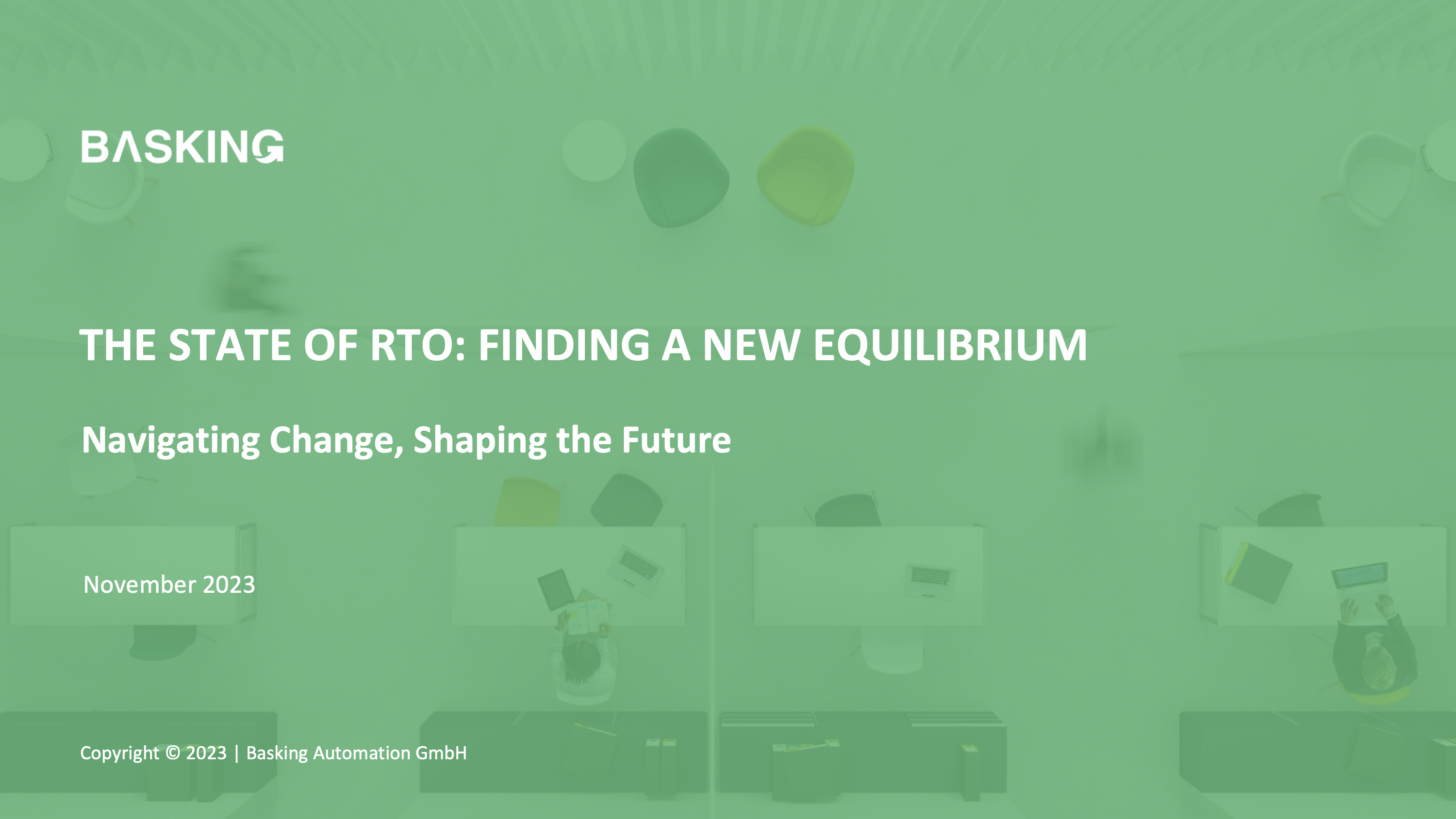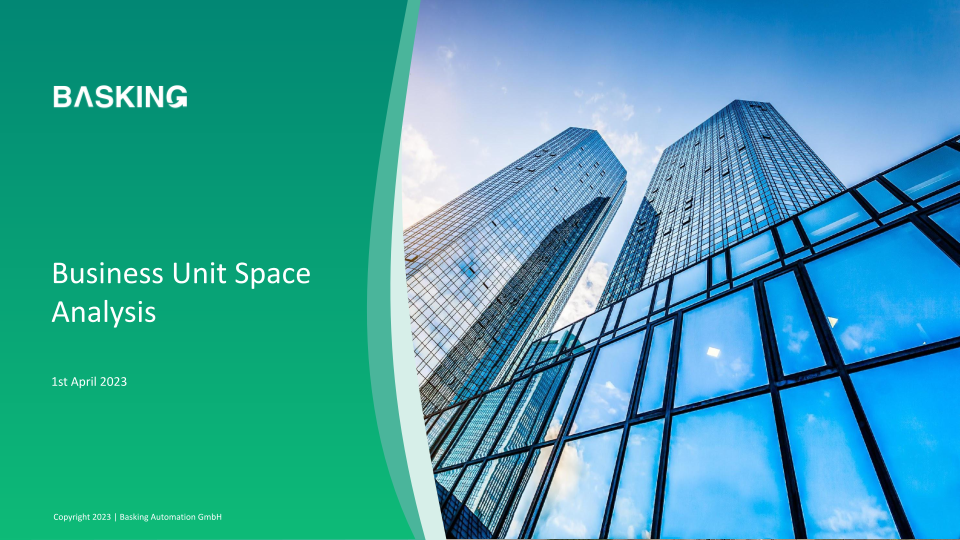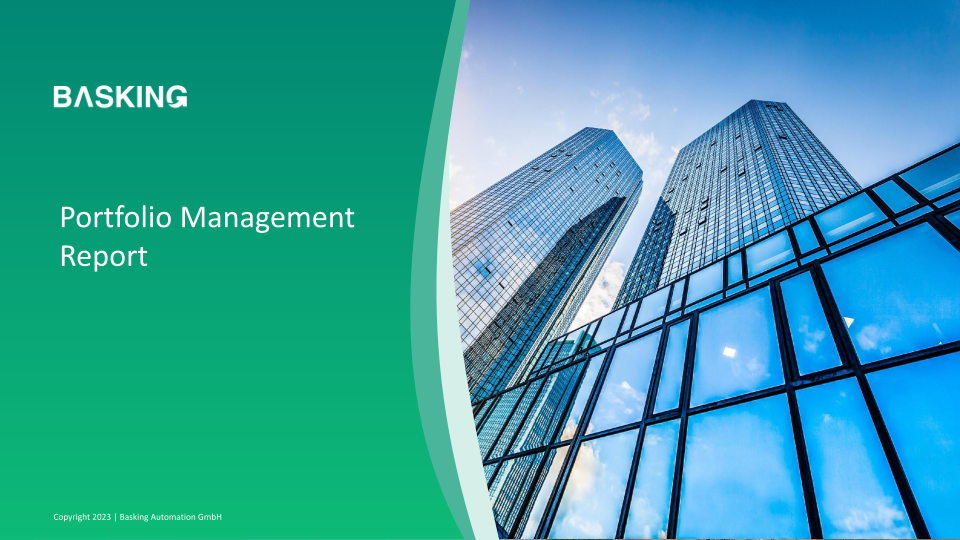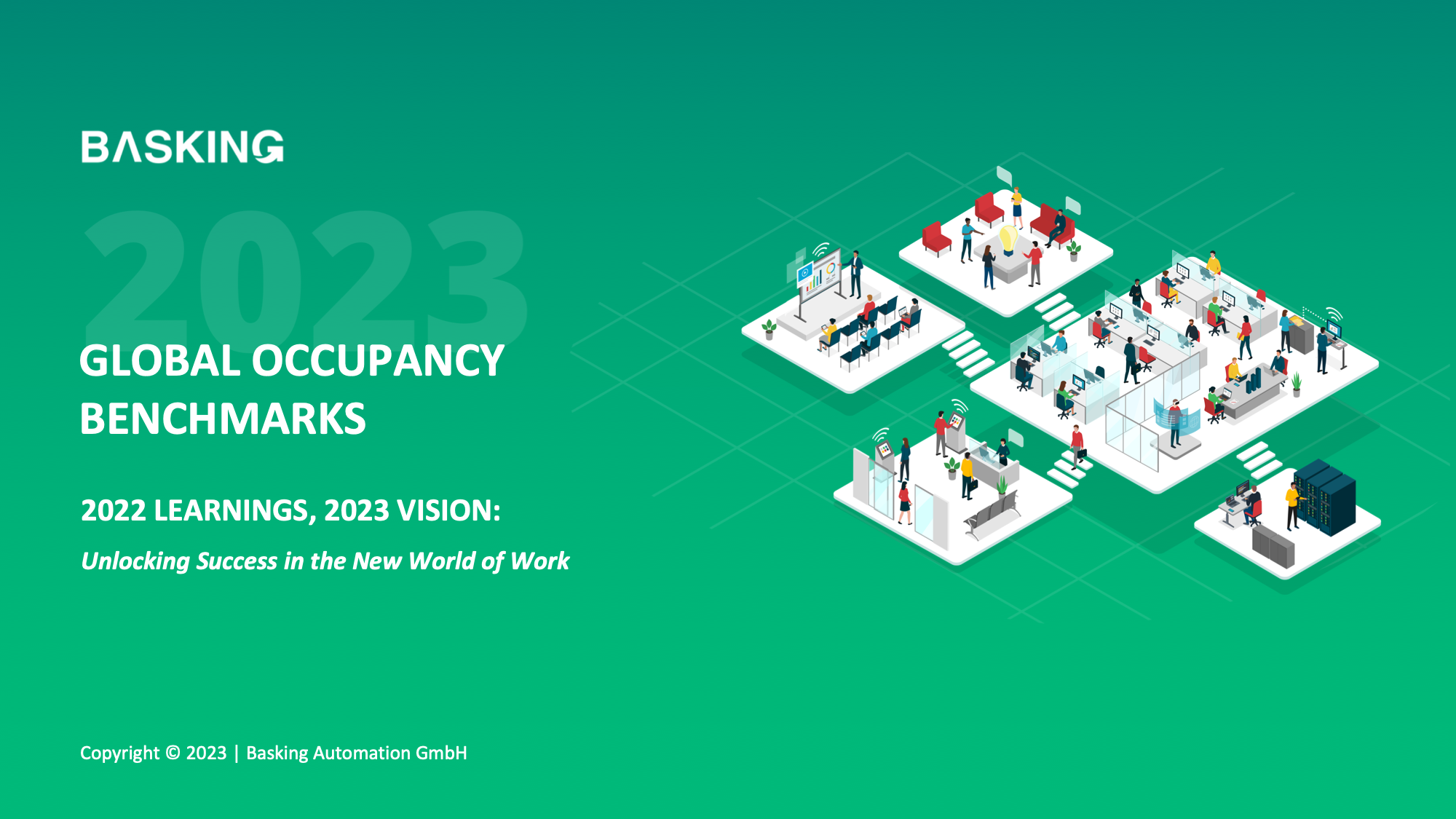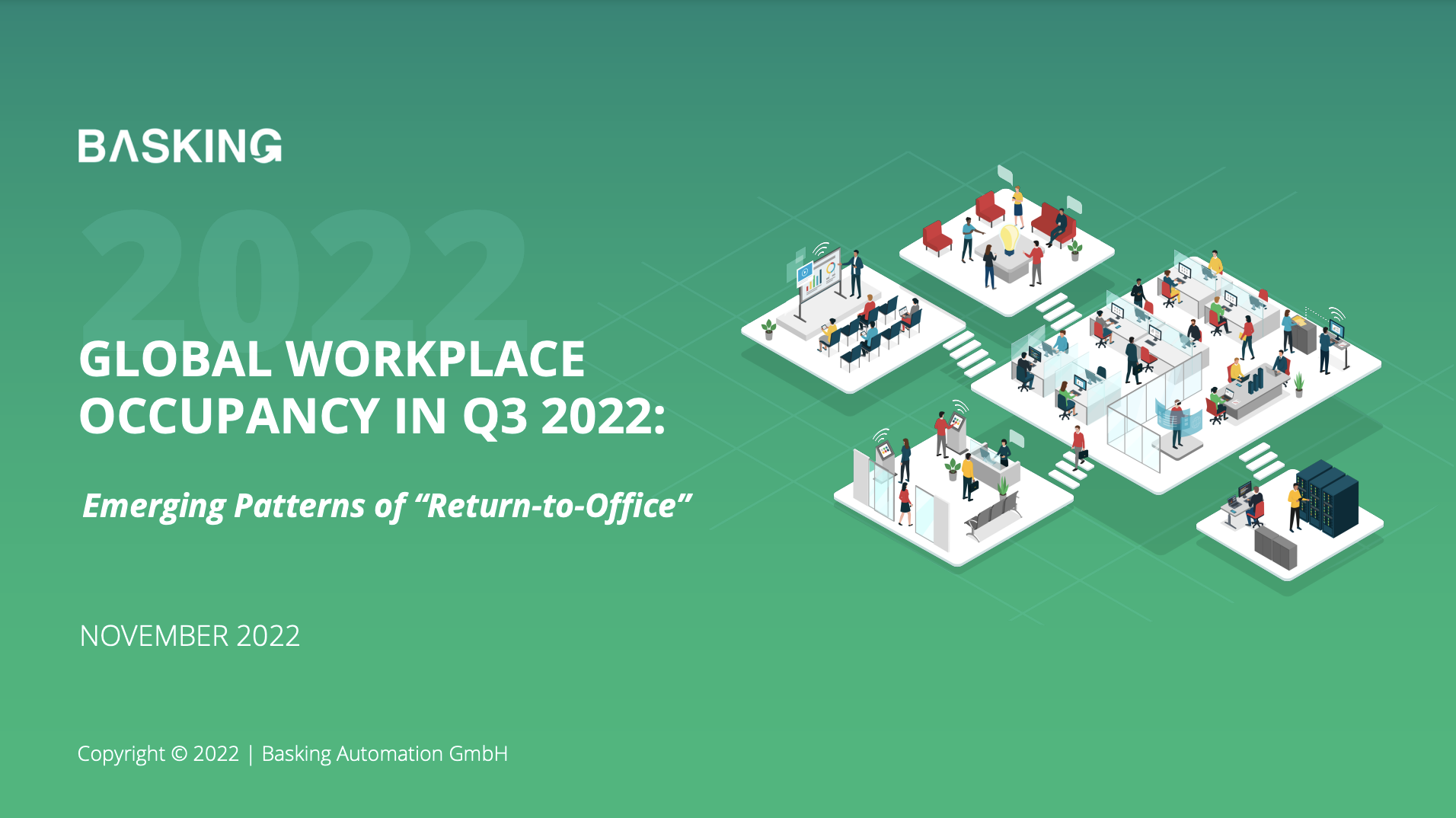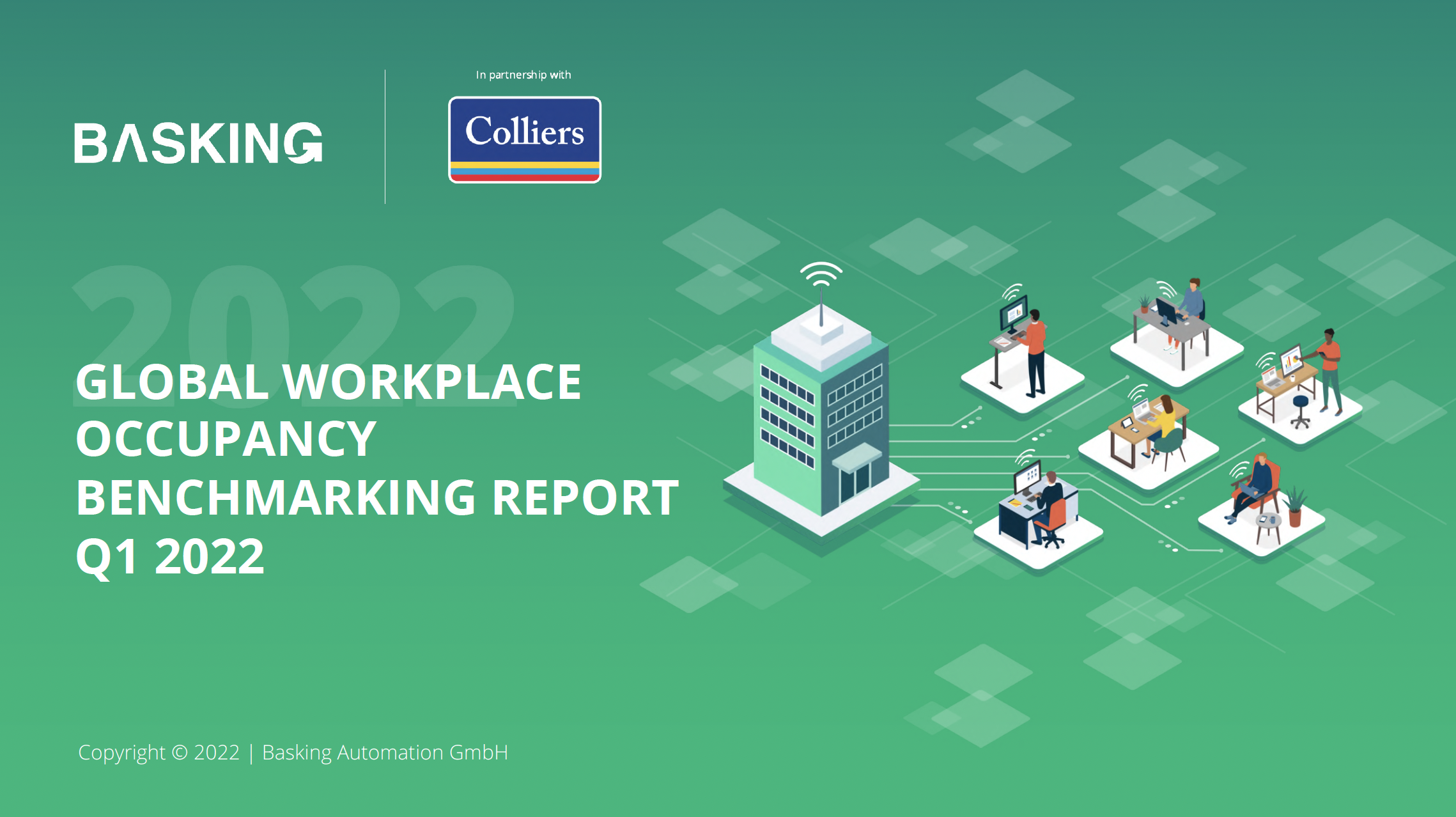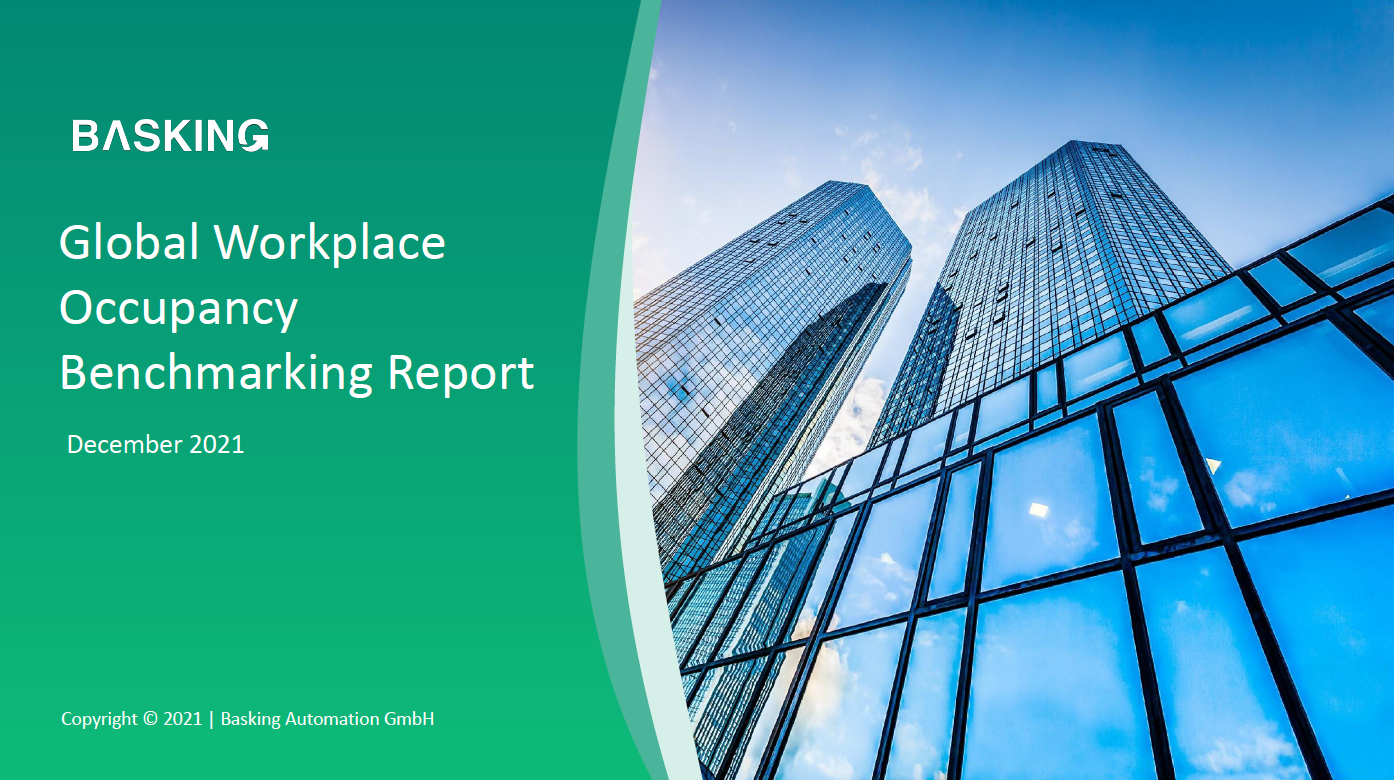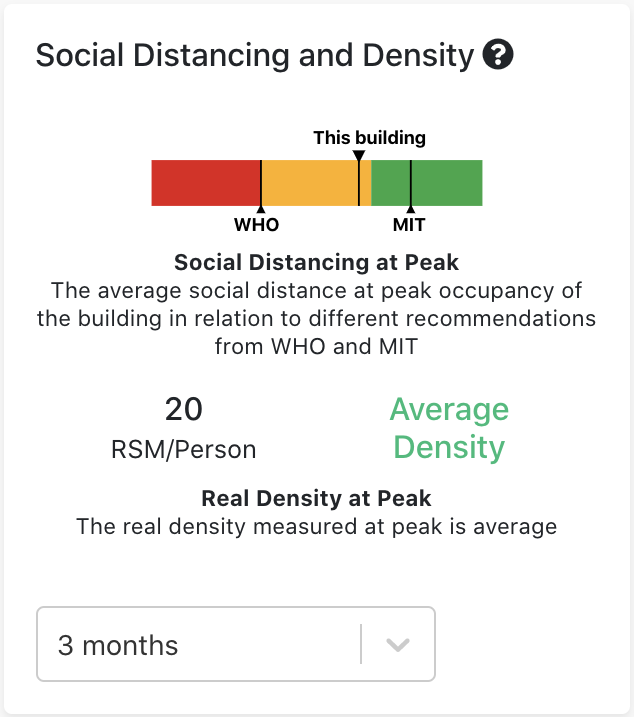Forecasting the New Normal Workplace Occupancy
How will the new normal occupancy of my offices change after the lockdown restrictions are lifted? What will be the new role of our offices? What should I know, especially regarding leases that are expiring soon?
At Basking, these are some of the frequent questions we hear from our customers. Real Estate and workplace managers recognize the opportunity COVID-19 has opened, but are also overwhelmed with the daily business and find it difficult to make strategic decisions.
Forecasting the “New Normal” Workplace Occupancy
We’ve used the sensitivity analysis approach to answer these questions and developed a new workplace occupancy forecasting tool to estimate the occupancy dynamics of any office based on our data and other workplace and work-from-home specific studies.
As shown in the picture, the tool calculates the occupancy for a typical week based on the definition of scenarios. This sensitivity analysis produces a corridor of expected occupancy levels and makes long-term planning possible. It enables Real Estate and Workplace managers to enter lease negotiations better informed.
Establishing the Occupancy Baseline
In order to establish the pre-COVID occupancy baseline, we use anonymized occupancy data collected in several offices from December 2019 to February 2020. This dataset allows us to measure the ratio of regular, mobile employees, and visitors in the pre-COVID period, and to synthesize a typical occupancy week.
This data will be fine tuned based on estimations for new locations so that the analysis can be performed on offices without real-time occupancy data.

Post-COVID-19 Occupancy Assumptions and Scenarios
To create the sensitivity analysis model of the post-COVID-19 occupancy, we define three scenarios with high, base, and low work-from-home (WFM) impact. Potential social distancing restrictions in the workplace are not being taken into account, because this tool is long term focused. Read more about how Basking monitors social distancing during the back to work phase.
The initial assumptions are based on a recent study of WFH adoption by Colliers International and are adjusted with our customers to reflect the reality of their workplace and work culture.

As an example, based on these assumptions we found that for the HQ office of a Fortune 500 company in NYC the peak occupancy rate will drop from 71% pre-COVID to 47% (high WFH impact), 55% (base case) and 59% (low WFH impact).
Create a post-COVID occupancy forecast for my workplace
If you are interested in performing a sensitivity analysis for your workplace and drive informed Real Estate decisions, please get in touch with us. The described sensitivity analysis solution is already available for all Basking customers.



